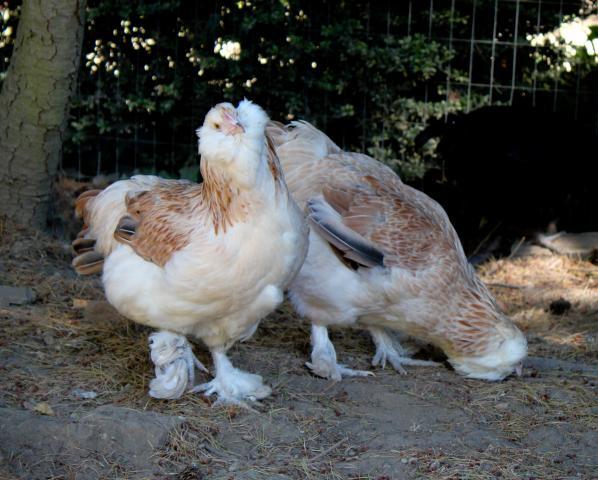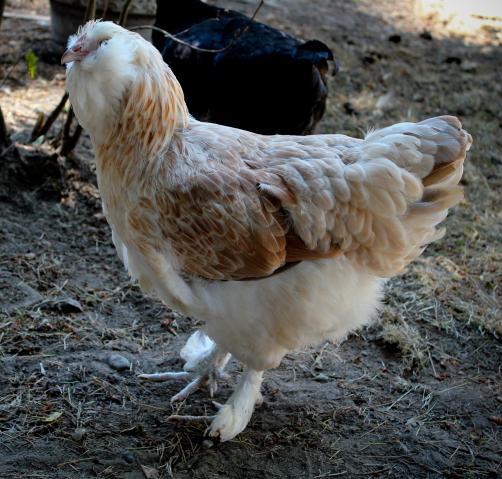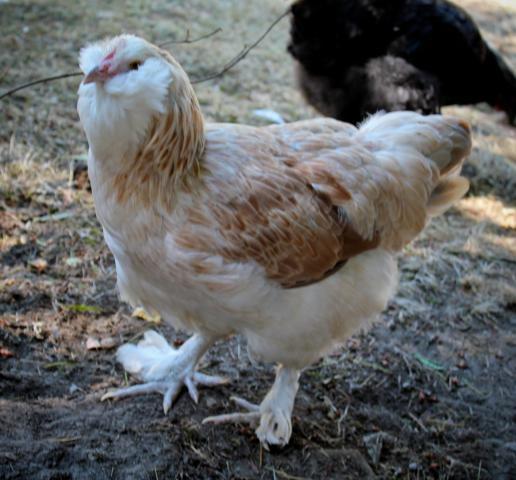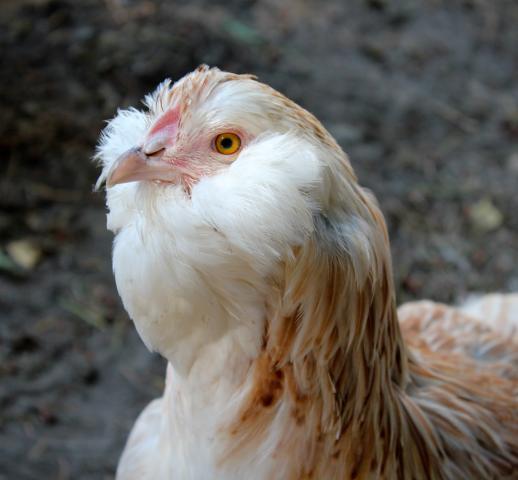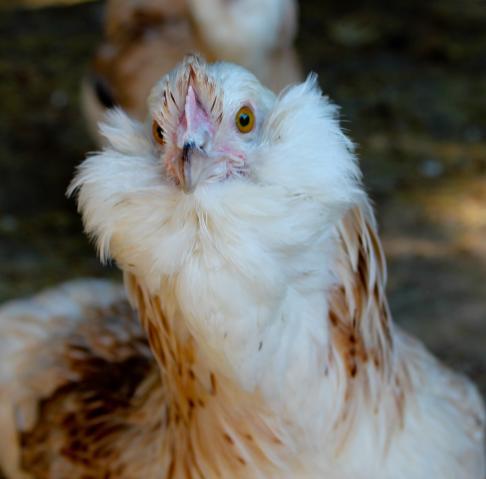So on another site Jeanine had asked about beard genetics. Full vs partial vs none. So I asked my trusty poultry encyclopedia ha. Sorry friend Keith. His reply is as follows. Thought I'd share it here for those who don't follow on both websites. For those that do sorry for the monotony.
Here was original post
If anyone knows the specifics on this, I'd love to hear it...wondering about the beard gene, and if it's the same with the favs as it is with Ameraucanas...
With the Ams, the birds with the full beards/muffs carry 2 copies of the gene, not so full = 1 copy, obviously beardless = no copies. So, if you breed 2 birds with the not so full beards/muffs, 25% of your chicks would be beardless.
Does this hold true for Favs?
And Keith's reply:
So, the Muffs and Beard, (Mb) genetics.
The Mb gene is the same for all poultry breeds, Polish, Houdans, Orloffs, Belgian Breaded DUccles, Faverolles, and Ameraucanas. This is caused by one incompletely dominant autosomal gene, and neither occurs without the other (meaning you cant have muffs without the beard and vice versa). The incomplete dominance means that one copy of the gene, (heterozygotes), is expressed over the wild type (no Mb gene), but not to its fullest as seen in homozygotes. However, as incomplete dominate genes go, also called codominance, there is variable expression so some of the fullest looking bearded birds are not necessarily homozygotes, but that is a good indication. Also, heterozygotes could also express a very full beard, but that is less likely as well.
So, the original question, if breading two birds with muffs and beards but they are not as full as others in the breeding population, will you get 25% non bearded birds? Yes, you can if these birds truly are heterozygous for the Mb gene. However, the incomplete dominance can be tricky but cleaning up a flock of birds from ever expressing the clean faces is not difficult. The trick is taking the birds homozygous for Mb trait to get muffs/beards that are even more full as seen in show Faverolles. That is the key, within the homozygotes get greater phenotypic expression of the Mb gene in the progeny.
To answer this question even more simply, the answer is YES









